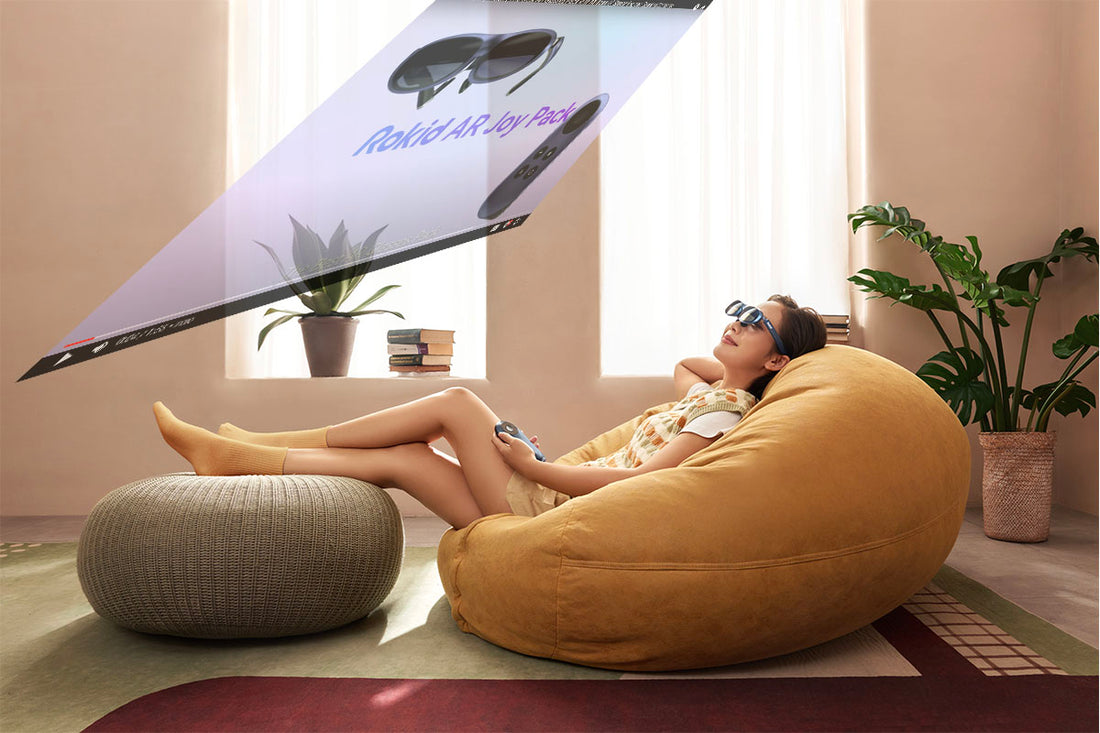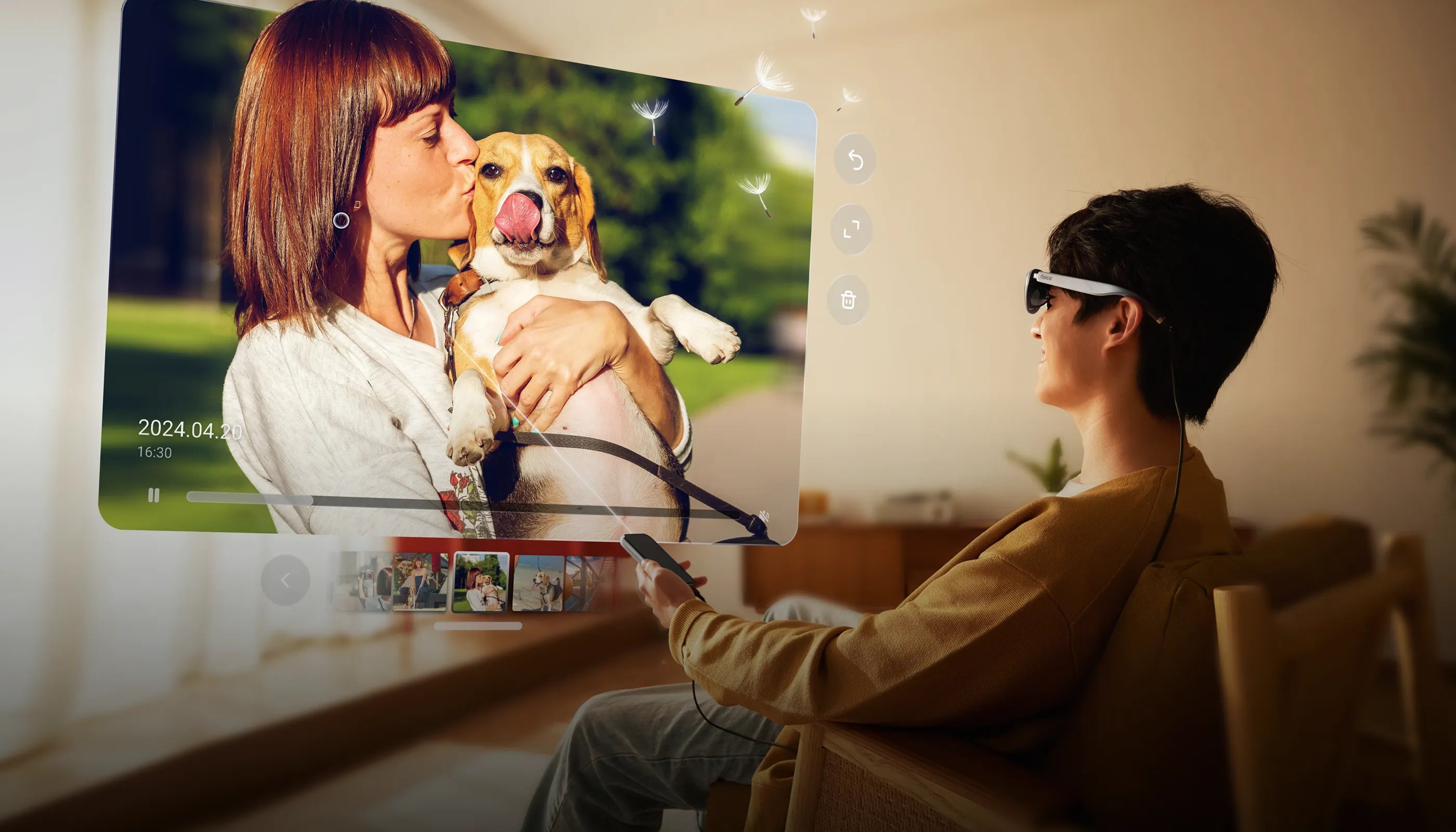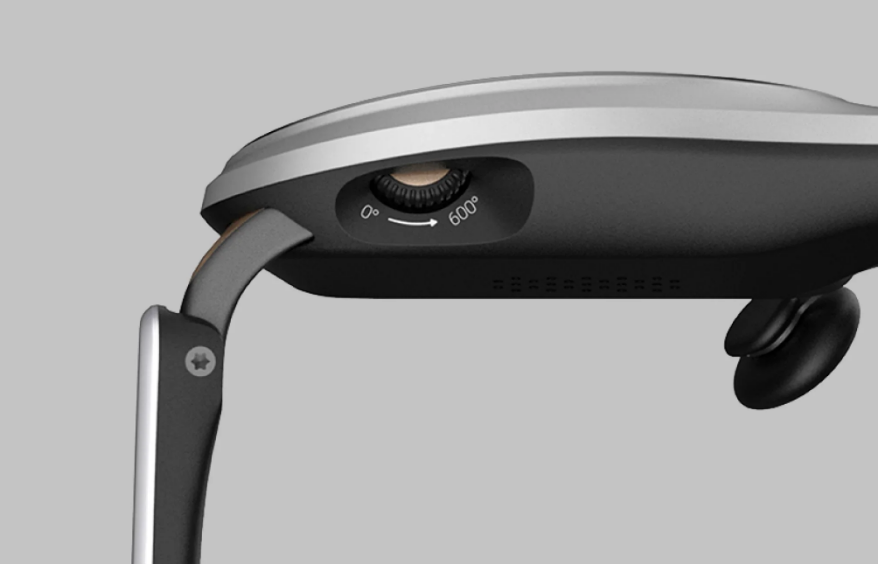
The future we once dreamed of is now at our doorstep with the advent of 3D smart glasses. These devices are revolutionizing our interaction with the digital realm, bringing the power of 3D augmented reality glasses into everyday life. As we step into 2023, these glasses aren't just a tech enthusiast's luxury; they're becoming an indispensable tool for everyone. Here are seven compelling reasons why 3D smart glasses should be on your radar and why they're more than worth the hype.
1: Unparalleled Immersion
The realm of 3D smart glasses has introduced an immersion factor that traditional 2D screens could never hope to achieve. These innovative devices have the unique capability to add a new dimension to your media by providing not just a window to view content but a door to step into it. The depth of field introduced by 3D technology brings a lifelike quality to games and videos, allowing characters and objects to pop out of the screen and float right before your eyes. This depth and interactivity foster an engaging environment where gamers aren’t just controlling a character; they're existing alongside them. For viewers, it's a cinematic experience akin to having a private IMAX theatre right in their living room—or wherever they choose to wear their 3D smart glasses.
2: Enhanced Visual Interaction
3D augmented reality glasses take visual interaction to the next level, creating a seamless blend of the real and digital worlds. They allow users to manipulate virtual objects and obtain information in real-time, using gestures and movements as fluid as if interacting with the physical world. With these glasses, architects can model 3D structures in mid-air, and educators can dissect virtual models for an entire class to observe. The intuitive interaction they facilitate empowers professionals and enthusiasts alike to explore, learn, and create in three dimensions with unparalleled ease and precision.

3: Cutting-Edge Design Meets Comfort
Modern smart glasses with display are a testament to the fusion of cutting-edge technology with human-centric design. No longer bulky and obtrusive, today's smart glasses are the result of meticulous design thinking that places equal emphasis on aesthetics and comfort. Lightweight materials, adjustable frames, and cushioning where it counts ensure that these glasses can be worn throughout the day without discomfort. The stylish designs mean they can be donned with confidence, whether in a boardroom, at a cafe, or during a commute, blending seamlessly with both casual and professional attire.
4: Accessibility Features That Empower
The advancement of glasses that project phone screen technology has been a game-changer for inclusivity, providing powerful tools to support visually impaired users. These smart glasses can magnify text, identify objects, and read out information audibly, helping to mitigate the challenges faced by those with sight limitations. The ability to project phone screens onto the lenses means that users can access smartphone features without having to physically interact with their device, offering newfound independence and empowerment. For the visually impaired, these glasses open up a world of possibilities, transforming how they connect with the world around them.
5: Entertainment That Moves With You
The era of being tethered to your TV or computer for high-quality entertainment is over, thanks to high tech glasses. These devices epitomize portability, allowing you to carry your personal cinema or gaming station in your pocket. Whether you're on a long-haul flight or waiting in a coffee shop, high tech glasses immerse you in your favorite film or game without the need for bulky equipment or a power source. They are powered with batteries designed to last for hours and equipped with storage capabilities, enabling users to store media directly on the device. This blend of mobility and accessibility means entertainment is now an on-demand service, personalized to your location and schedule.
6: A New Frontier in Education and Training
Glasses that display video are carving a new path in the sectors of education and professional training. By enabling interactive learning experiences, they go beyond the passive consumption of educational content. Imagine biology students exploring the human body in 3D right before their eyes or mechanics disassembling a virtual engine piece by piece. The level of engagement provided by these glasses helps to solidify comprehension and retention of complex subjects. In professional training scenarios, they offer hands-on experience without the risks or costs associated with real-world training, presenting step-by-step instructions overlaid in the user's field of view.
7: The Evolution of Connectivity
In the ever-expanding universe of connected devices, 3D smart glasses stand out as the harbinger of a new age of interconnectivity. They don't just pair with other devices—they create a mesh of synchronized technology, enhancing the functionality of smartphones, smartwatches, and IoT devices. By projecting notifications, media controls, and sensor data directly into the wearer's line of sight, 3D smart glasses act as the command center for a network of devices. This interconnected ecosystem streamlines the user's digital experience, making it more efficient and intuitive. The glasses themselves become a hub, a sort of control panel for the digital aspects of life, blurring the lines between the physical and the virtual.
As you integrate these 3D smart glasses into your daily life, you'll find that they redefine reality in ways you didn't expect. They're not just about what you see but how you see and interact with the world. The possibilities are as limitless as your imagination, and in 2023, they're an investment into a future that's here to stay.



